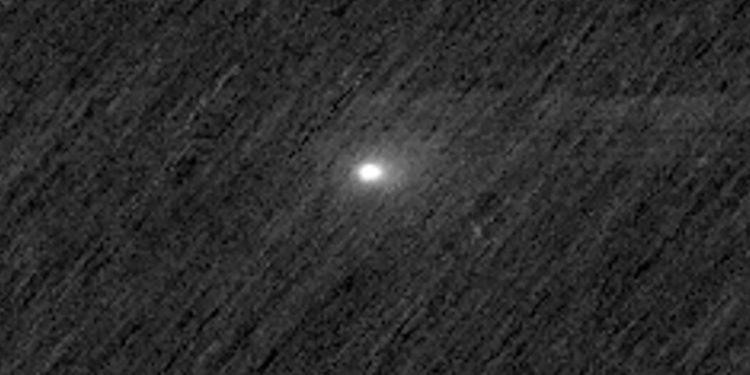Typically, the orbiter, which has been studying Mars since 2016, points its camera at the surface 250 miles below, taking about three photos per second with an exposure time of about 1.5 milliseconds, Dr. Thomas said. Here he was aiming for a spot nearly 20 million miles away, with five-second exposures, trying to make out something that was between 1/10,000th and 1/100,000th as bright as his usual observations.
Five seconds was long enough to gather enough light, but not so long that the spot would be too smeared by the movement of the comet.
“I’m surprised it’s so good, to be honest,” Dr. Thomas said.
The camera also took images using its red, near-infrared and blue filters, which could provide clues about the properties of comet 3I/ATLAS. If, for example, the ratio of blue to red light increases with distance from the core, that could indicate that the comet’s particles are getting smaller as the ice turns to vapor, Dr. Thomas said. (Smaller particles scatter blue light more effectively.)
If there was little or no ice, the particles would remain about the same size.
Scientists will need to analyze the images more carefully before they can draw confident conclusions. Although they can see the comet clearly, the colored filters block more of the light, making it harder to detect a real science signal amid the noise in the sensors.
Mars Express, a former ESA spacecraft that has been orbiting Mars for more than two decades, also attempted to take photos, but its camera could only take half-second exposures. So far, nothing has been revealed in these images taken between October 1 and 7.









